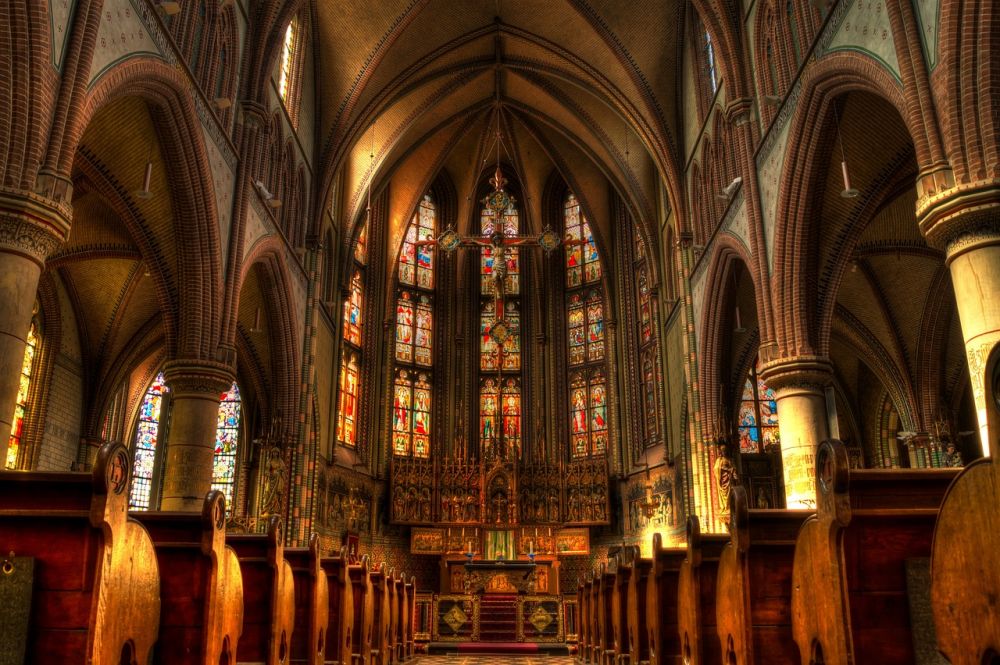Bauhaus-arkitektur: En revolutionerande stil som formade modernismen

Bauhaus-arkitektur är en unik stil som uppstod under tidigt 1900-tal och spelade en avgörande roll för utvecklingen av modernismen inom arkitektur och design. I denna artikel ska vi utforska denna rörelse i detalj, från dess ursprung till dess påverkan på dagens byggnadskonst.
En övergripande, grundlig översikt över ”bauhaus arkitektur”.
Bauhaus-arkitektur är starkt förknippad med Bauhaus-skolan i Tyskland, som grundades av Walter Gropius år 1919. Skolan hade som mål att förena konst och hantverk för att skapa en funktionalistisk och estetiskt tilltalande arkitektur. Bauhaus-arkitekturen betonar användandet av moderna material, ren geometri och en minimalistisk stil.
Den ledande tanken bakom Bauhaus-arkitekturen var att konst och teknik skulle förenas för att skapa estetiskt tilltalande byggnader som även var funktionella. Bauhaus-arkitekterna strävade efter att bryta konventionerna och utforska nya metoder för att skapa hållbara och innovativa strukturer.
En omfattande presentation av ”bauhaus arkitektur”.

Inom bauhaus-arkitekturen finns det flera olika typer av byggnader och stilar. En av de mest kända är Bauhaus Modernism. Detta är en minimalistisk och geometrisk stil som betonar rena linjer och enkla former. Bauhaus-modernismen var banbrytande när den först introducerades, och den inspirerade många senare arkitektoniska rörelser.
En annan populär typ av bauhaus-arkitektur är Ekonomisk arkitektur. Denna stil fokuserade på att skapa prisvärda och effektiva byggnader för massproduktion. Ekonomiska hus byggdes med hjälp av prefabricerade delar och använde moderna tekniker för att sänka kostnaderna och öka produktiviteten.
En tredje typ av bauhaus-arkitektur är Expressionistisk arkitektur. Denna stil var mycket mer konstnärlig och experimenterade med form och färg. Expressionistiska byggnader var ofta mycket abstrakta och försökte uttrycka en känsla eller en idé genom sina särpräglade fasadformer.
Kvantitativa mätningar om ”bauhaus arkitektur”.
In order to understand the impact of Bauhaus architecture, it is important to look at quantitative measurements. Bauhaus architecture aimed to achieve efficiency and functionality, but it also had a significant influence on the economic aspects of construction.
One of the key quantitative measurements of Bauhaus architecture is the cost per square meter. Compared to traditional building methods, Bauhaus architecture often proved to be more cost-effective due to its use of standardized and prefabricated components. This allowed for faster construction times and reduced labor costs.
Another important measurement is the energy efficiency of Bauhaus buildings. Many of these structures incorporated innovative heating, ventilation, and insulation systems, which resulted in lower energy consumption. The emphasis on functional design and sustainable materials also contributed to the overall energy efficiency of these buildings.
En diskussion om hur olika ”bauhaus arkitektur” skiljer sig från varandra.
Despite the unifying principles of Bauhaus architecture, there are distinct differences among its various styles. Bauhaus Modernism, for example, focuses on clean lines and simple forms, while Expressionist architecture experiments with abstract shapes and vibrant colors.
Additionally, the use of materials can vary significantly in different types of Bauhaus architecture. Some styles emphasize the use of industrial materials such as steel and glass, while others focus on more natural materials such as wood and stone. These material choices can greatly influence the overall aesthetic and functionality of the buildings.
En historisk genomgång av för- och nackdelar med olika ”bauhaus arkitektur”.
One of the main advantages of Bauhaus architecture is its emphasis on functionality and efficiency. The use of standardized components and prefabricated elements allowed for faster and more cost-effective construction. Additionally, the focus on energy efficiency and sustainable materials makes Bauhaus buildings environmentally friendly.
However, one potential disadvantage of Bauhaus architecture is that some styles may appear cold or impersonal. The minimalist approach and clean lines can sometimes lack the warmth and character found in other architectural styles. Furthermore, the focus on functionality may result in buildings that prioritize utility over aesthetics.
In conclusion, Bauhaus architecture revolutionized the field of design and played a crucial role in shaping modernism. Through its unification of art and technology, Bauhaus architects created functional and aesthetically pleasing buildings. The various styles within Bauhaus architecture offer a range of options that cater to different preferences and requirements. From Bauhaus Modernism to Expressionist architecture, each style has its own unique characteristics and contributions to the movement. Despite any potential disadvantages, the influence of Bauhaus architecture can still be seen in contemporary architecture and design.
As a [Formell] online magazine, we hope that this in-depth article has provided a comprehensive understanding of Bauhaus architecture, its different styles, quantitative measurements, and historical significance. Whether you are a design enthusiast or a curious homeowner, Bauhaus architecture continues to inspire and shape the world of architecture.
FAQ
Vad är Bauhaus-arkitektur?
Vad är fördelarna med Bauhaus-arkitektur?
Vilka olika typer av Bauhaus-arkitektur finns det?
Fler nyheter
Körkortsfoto i Vällingby: Din guide till det perfekta fotot
Bauhaus-arkitektur är en unik stil som uppstod under tidigt 1900-tal och spelade en avgörande roll för utvecklingen av modernismen inom arkitektur och design. I denna artikel ska vi utforska denna rörelse i detalj, från dess ursprung till dess påverk...
03 maj 2025
Gravidfotografering Stockholm Fånga Ögonblicken Innan Livet Förändras
Bauhaus-arkitektur är en unik stil som uppstod under tidigt 1900-tal och spelade en avgörande roll för utvecklingen av modernismen inom arkitektur och design. I denna artikel ska vi utforska denna rörelse i detalj, från dess ursprung till dess påverk...
31 juli 2024
Aboriginer konst – en fascinerande utforskning av Australiens rika kulturella arv
Bauhaus-arkitektur är en unik stil som uppstod under tidigt 1900-tal och spelade en avgörande roll för utvecklingen av modernismen inom arkitektur och design. I denna artikel ska vi utforska denna rörelse i detalj, från dess ursprung till dess påverk...
18 januari 2024











